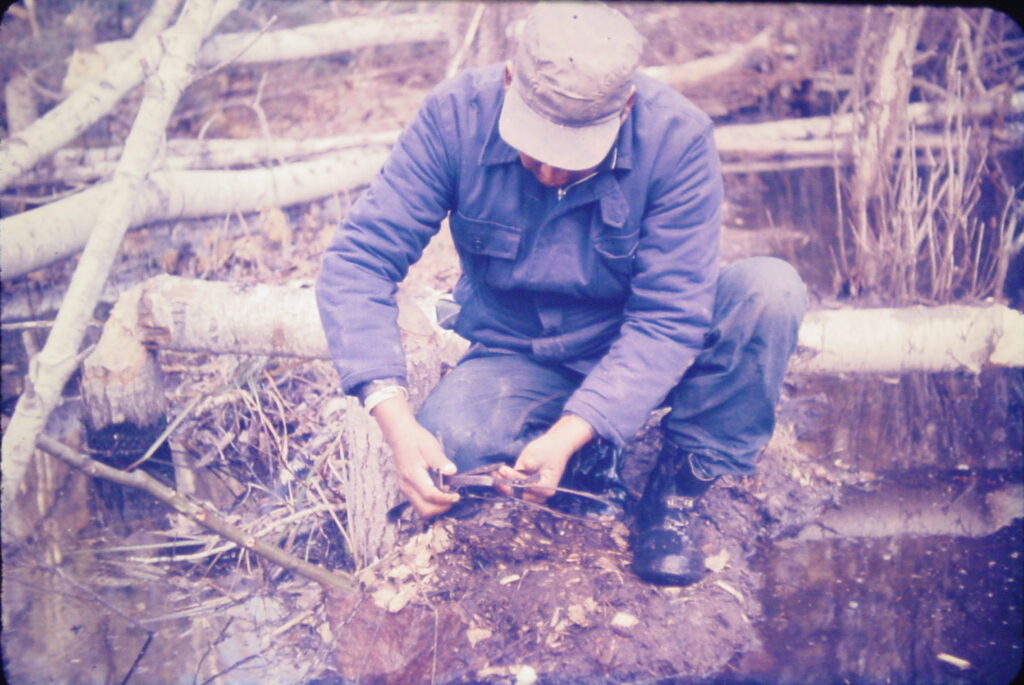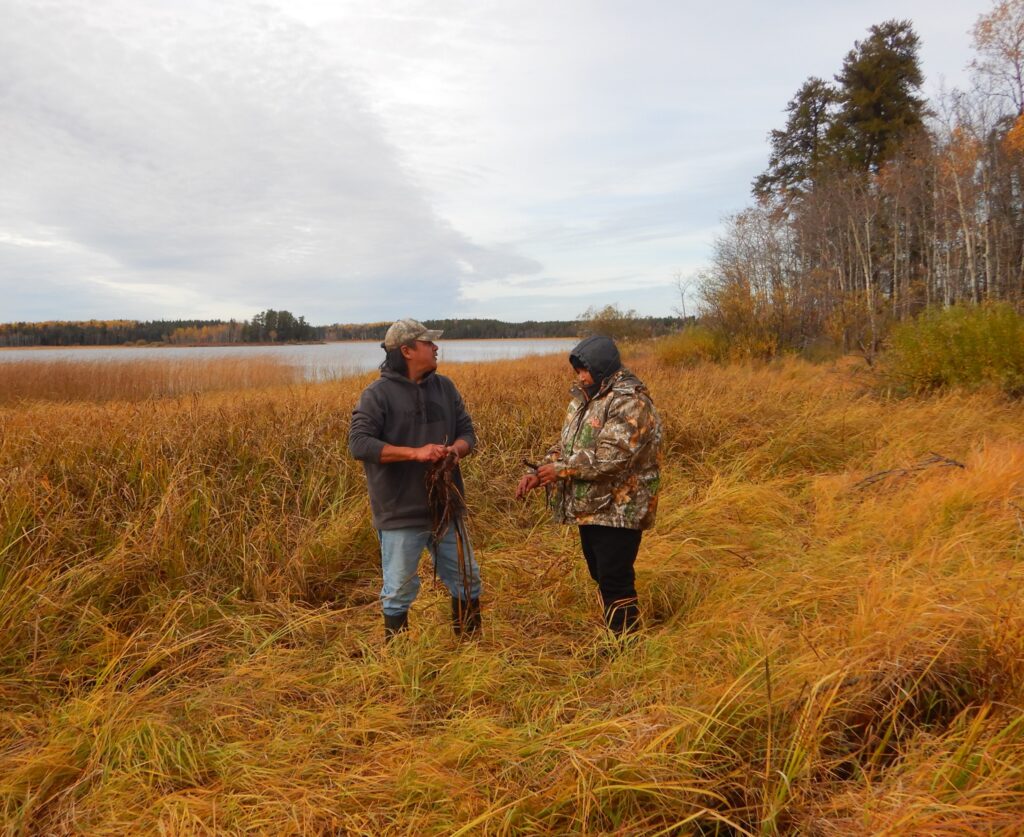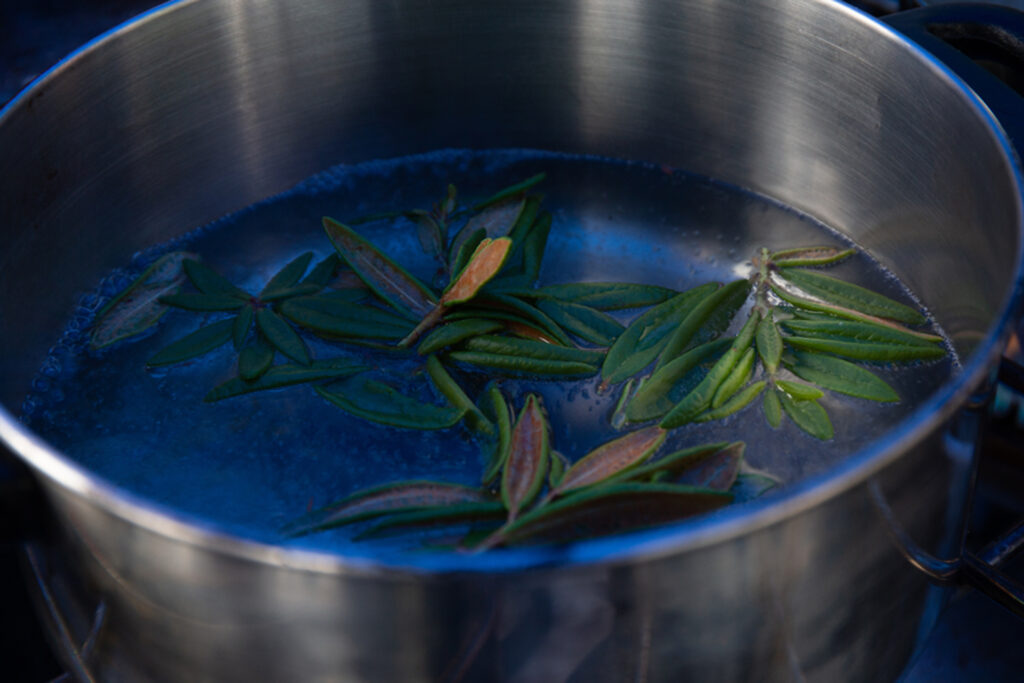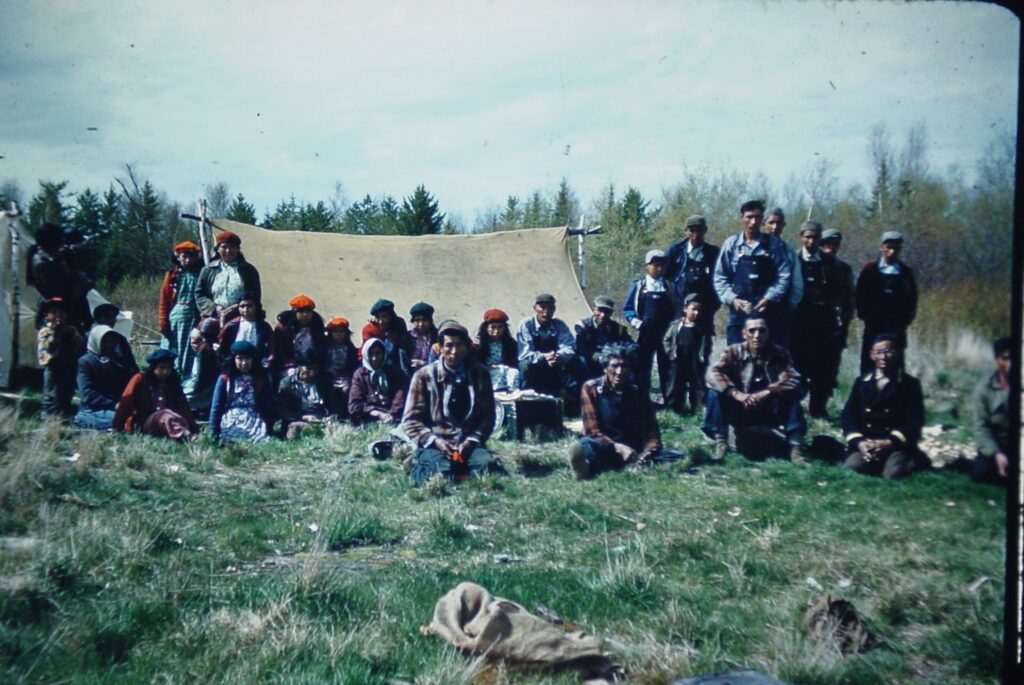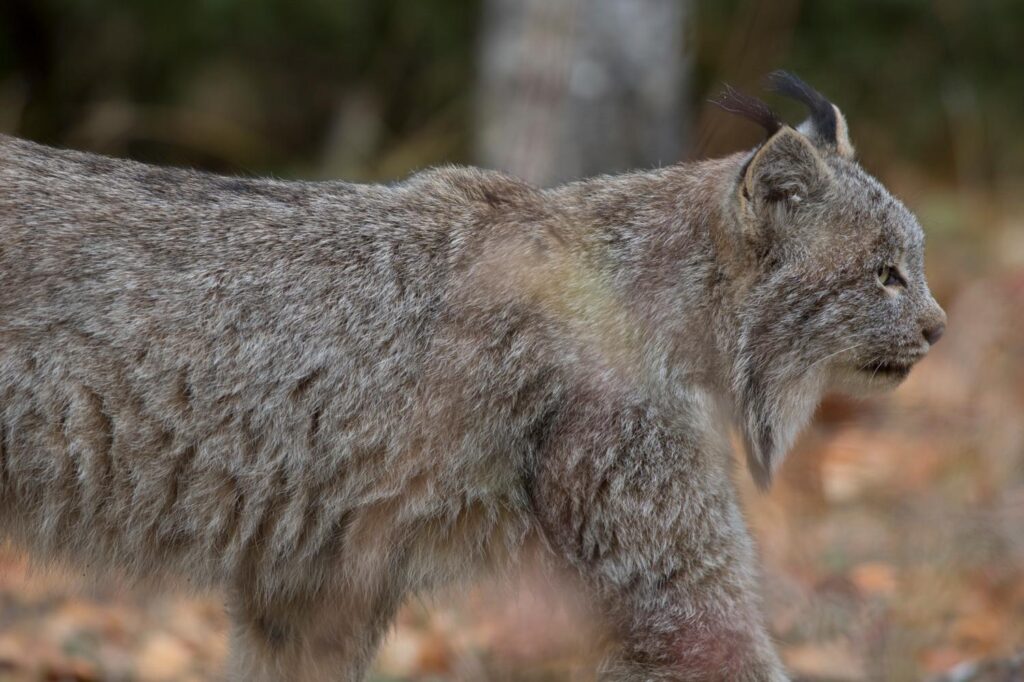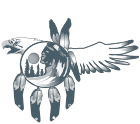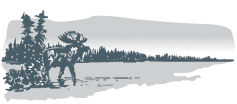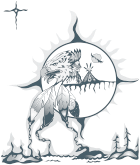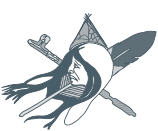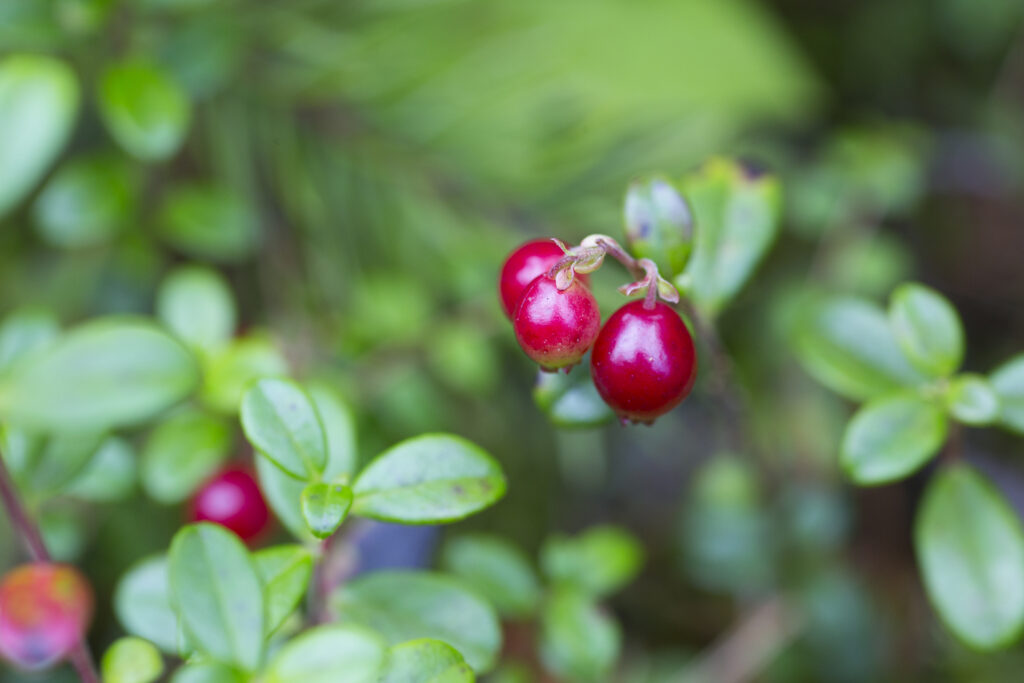
Anishinaabeg hold a wealth of knowledge about plants. Plants are a significant source of food, medicine, and building and craft materials. We have long used them to sustain our communities and way of life while safeguarding the health of the boreal forest.
This season, colourful plants, flowers and vegetation are rising from the earth all over Pimachiowin Aki. Roughly 700 plant species live in Pimachiowin Aki’s lands, wetlands and waters, including trees, shrubs, flowers, grasses, mosses and lichens. You have probably walked past many of these plants on your walks and hikes across Canada, or paddled by them while kayaking or canoeing.
Here are 10 plants to keep an eye out for this summer!
Edible Plants
1. Miskomin (Raspberry)
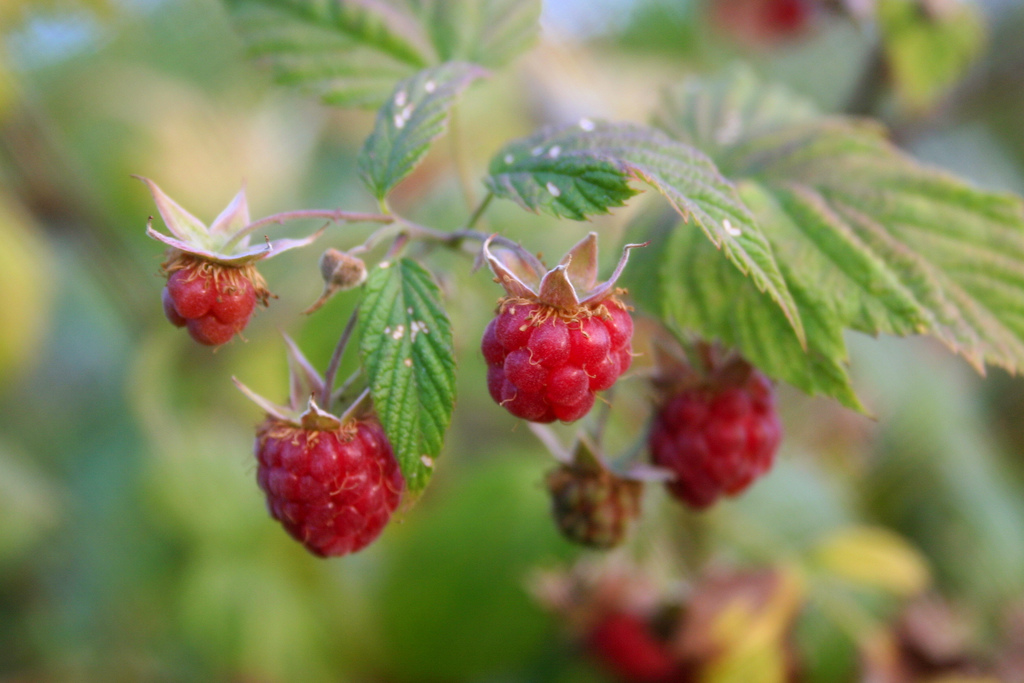
What it Looks Like
Due to its distinct shape and vibrant colour, a raspberry plant is easy to identify, especially once berries have begun to bud. Raspberries are a type of compound berry, which means they’re made up of a tight cluster of smaller sacs of juice. They have tiny hairs in between each juice sac. Still unsure? Look beyond the bright fruit and check the entire plant. Raspberry bushes may have prickles or bristles.
Where it Grows
Raspberries usually grow near water, in woods or clearings. Check riverbanks where there is a lot of grass.
When to Harvest
Picking season begins in July and ends in late August.
Uses
- The wild brambles of the raspberry bush provide shelter for birds, squirrels, skunks and other small wildlife in Pimachiowin Aki
- Humans and animals eat raspberries, providing us with antioxidants and a great source of fibre
- Raspberries are good to eat fresh or use in jams. Freeze the berries to preserve them.
2. Ososoweminaatig (Chokecherry)
What it Looks Like
The chokecherry tree rarely grows taller than 30 feet, and the top of the tree can stretch from 10 to 20 feet wide. The colour of its bark indicates the plant’s age — grey or reddish-brown for young trees and brownish-black for older trees. Another way to identify young chokecherries is through the horizontal rows of raised pores on their bark. Their serrated leaves are a dark glossy green on top, and the underside is light. Chokecherries begin with fragrant, white blossoms before budding into dark berries. The colour of the berries ranges from white, deep red to black. They often look like blueberries or saskatoon berries when they’re ripe.
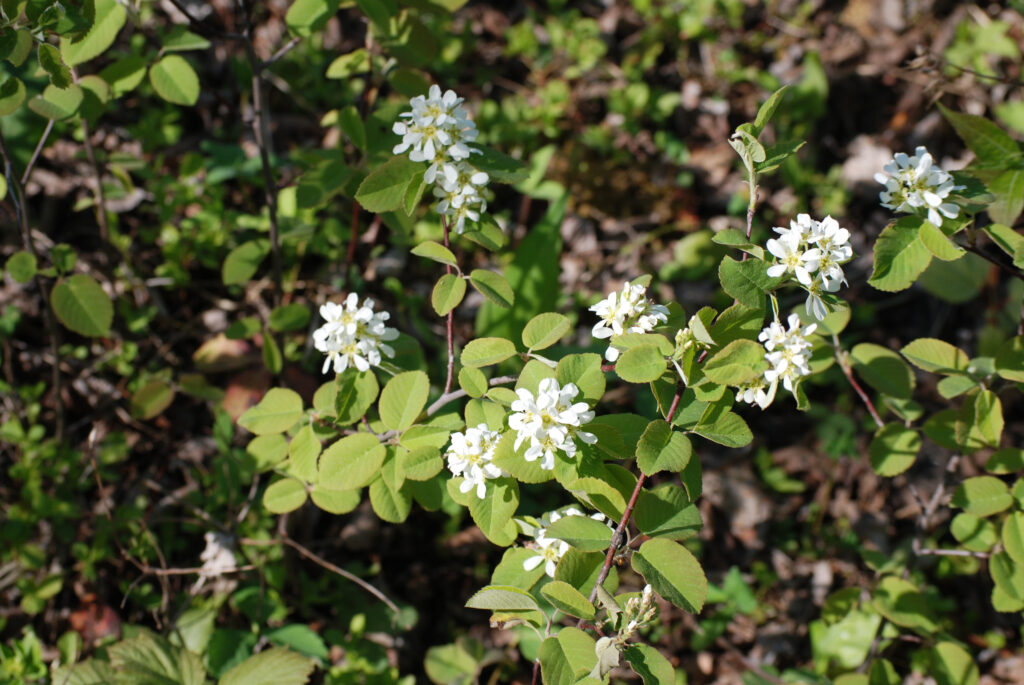
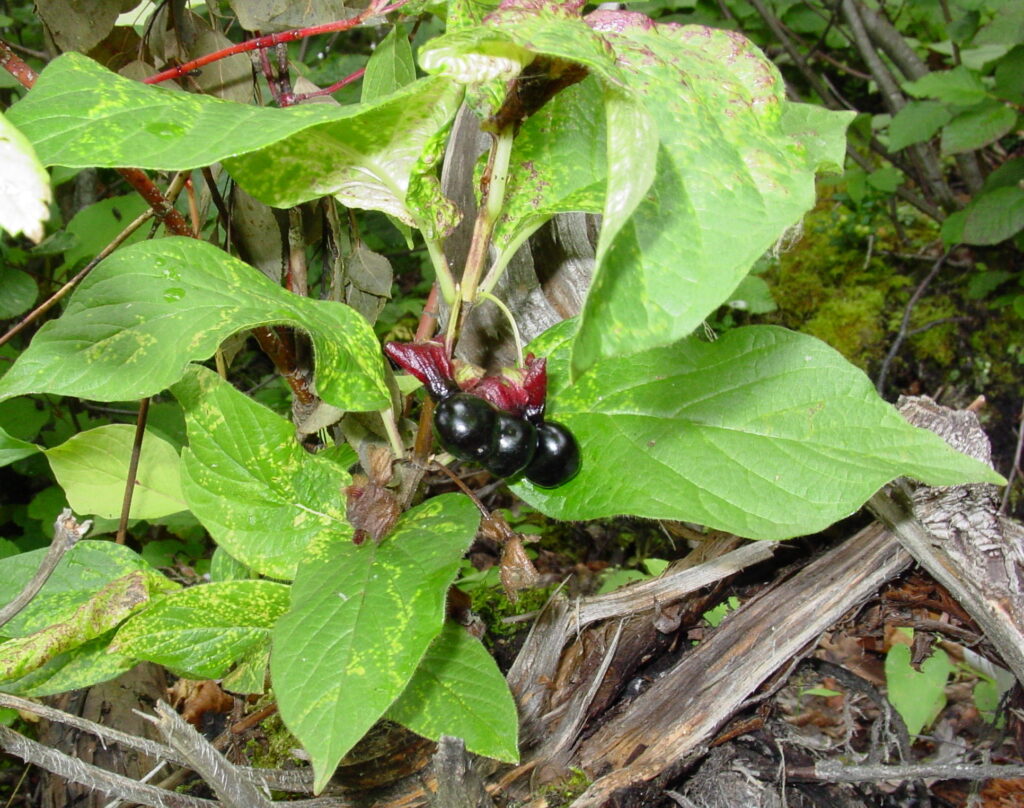
Where it Grows
Look for chokecherries in open areas of plains, forests and foothills; in patches in the bush; and near water. They like sunny or partially shaded areas in thickets.
When to Harvest
Chokecherries are ready for picking in August and September.
Uses
Chokecherries are used in:
- Soups and stews
- Jellies, syrups, sauces, juices and jams
Note
Chokecherries are delicious but the hard seeds can cause stomach upset if you eat too many.
3. Miishiijiimin (Red Currant)
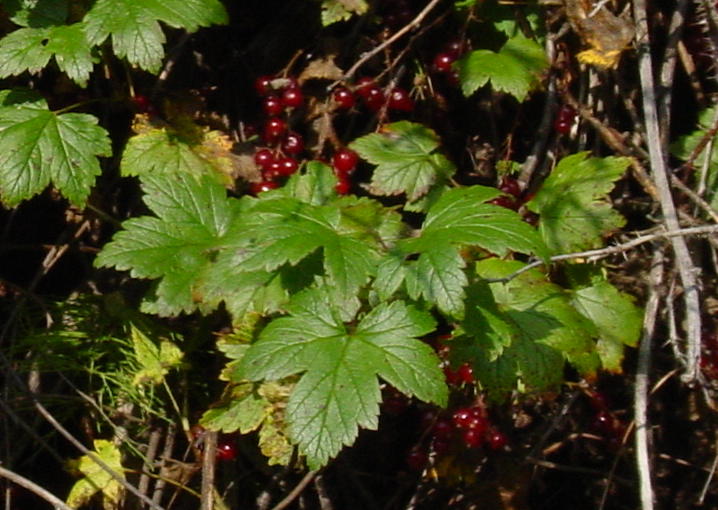
What it Looks Like
Red currants are tiny, bright translucent red berries that grow in clusters. The shrub plant grows about three feet high or at waist height for the average person.
Where it Grows
The red currant shrub grows in swamps, moist open forests and on the banks of streams.
When to Harvest
Red currants are ready for harvesting in summer to early fall, in the months of July, August and September.
Uses
- Use the sour-tasting red berries in salads or pair them with other fruits
- Drink red currant juice or tea to reduce fever and induce sweating
- Harvest the leaves in the spring and summer before the plant goes into berry, for use as a compress or poultice for slow-healing wounds
- Use the leaves fresh or dried in teas to ease symptoms of gout and rheumatism
- Gargle the tea for mouth infections
4. Ozhaashaagobag (Bunchberry)

What it Looks Like
Bunchberries look different throughout the seasons. Look for white flowers in late spring, red-orange berries sprouting from the centre in summer, and a red leaf colour in the fall.
Where it Grows
The Bunchberry plant can be found growing close to the ground under the shade of trees, often where moss grows.
When to Harvest
Bunchberries ripen and are ready for picking in July or August.
Uses
- The berries are a food source for black bears, martens, snowshoe hares and other small mammals, as well as many migratory birds. Bunchberry is a winter forage plant for caribou and moose
- People can eat the berries raw or boiled. They preserve well and can be added to jams, puddings, other baked treats and teas
- They contain high levels of pectin making them a great addition to low pectin fruits when making jams
- The berries have a high concentration of vitamin C
5. Ozigwaakomin (Saskatoon Berry Bush)

What it looks like
Saskatoon berry bush is a shrub or small tree that can grow to 16 feet tall. Mature bushes produce clusters of white flowers in the spring. The leaves are oval-shaped with jagged edges along the tops, and the dark grey to reddish brown branches are smooth in texture. Saskatoon berries range in colour from light purple to almost black.
Where it grows
Saskatoon berry bushes are found in rocky, grassy clearings, thickets, and open hillsides.
When to harvest
Berries are ready for picking in July. Saskatoons continue to ripen after they are picked. Fully mature berries are sweeter and have a fuller fruit flavor, but are softer and more easily damaged.
Uses
- Saskatoons are consumed fresh, or preserved by freezing or drying
- The berries are an excellent source of fibre, protein and antioxidants
Try this recipe for Saskatoon Pie.
Note
Saskatoon berry pits contain a poisonous cyanide-like substance, just like apple seeds. The toxin may be destroyed by cooking or drying the berries
6. Makominan (Bearberry)
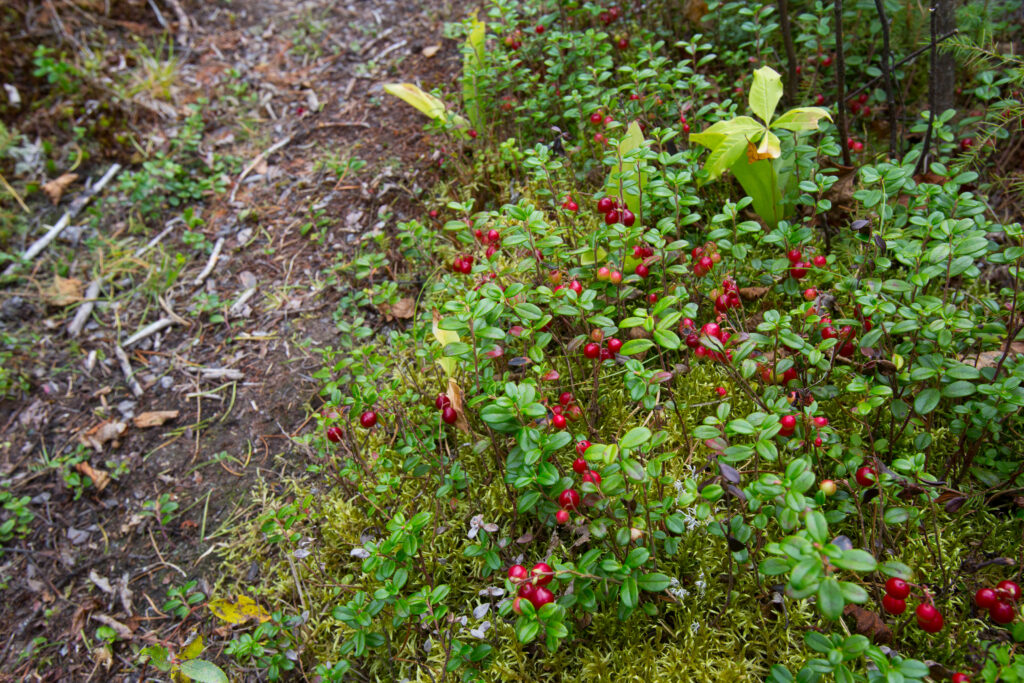
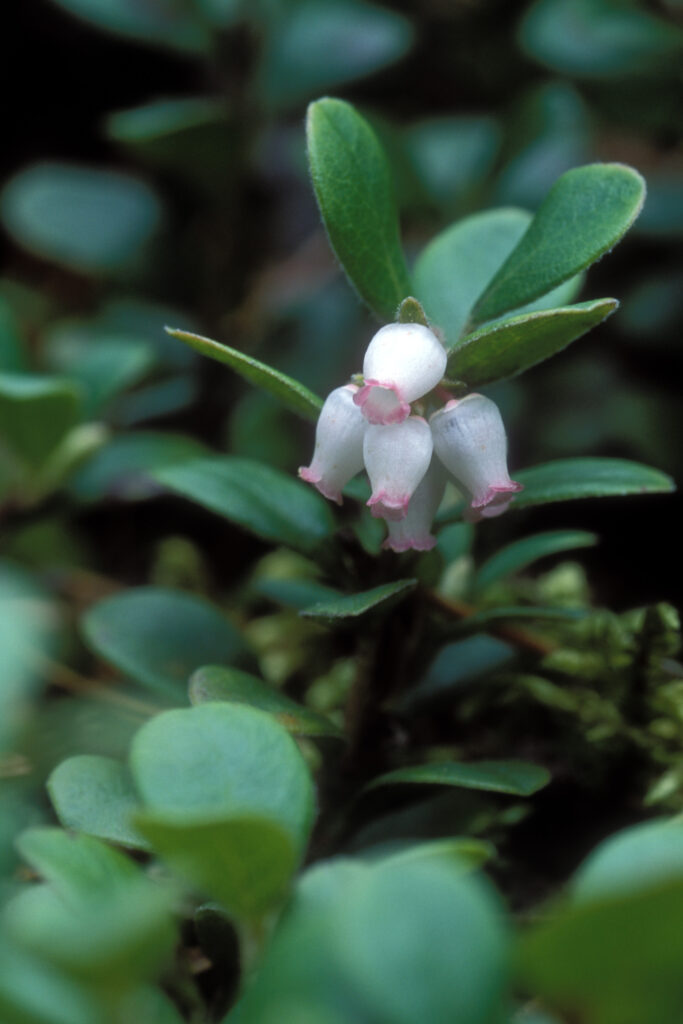
What it Looks Like
Bearberry shrubs consist of smooth, oval-shaped leaves, pinkish-white bell-shaped flowers and dull red berries. The shrub typically grows 1/2 foot tall and slowly spreads horizontally to form mats. The thick, leathery leaves are rolled under at the edges. They are yellow green in spring, dark green in summer, and reddish-purple in fall.
Where it Grows
Bearberries grow by the river, in dry open woods and in gravelly or sandy soils. The low-growing shrub is tolerant of cold weather.
When to Harvest
Blooms can appear any time from April to July, depending on where you live. Bright red fruit is formed by the end of the summer and typically remains on the bush throughout winter.
Uses
- Bearberry is an appropriate name as these mealy edible fruits are a favourite of bears
- Birds, deer and small mammals also eat the berries
- Dry the berries to store them
- Grind dried berries and cook them into a porridge
- Use dried leaves for tea to help with kidney and bladder infections
- Tan hides with the tannin in bearberry leaves
- Add dried leaves to tobacco or use as a substitute
Note
- Eating too many bearberries may cause nausea or constipation
- Eating bearberries for a prolonged time can cause stomach and liver problems. Children and pregnant or breast-feeding women should avoid the berries
7. Gaa-minomaagobagak (Wild Mint)
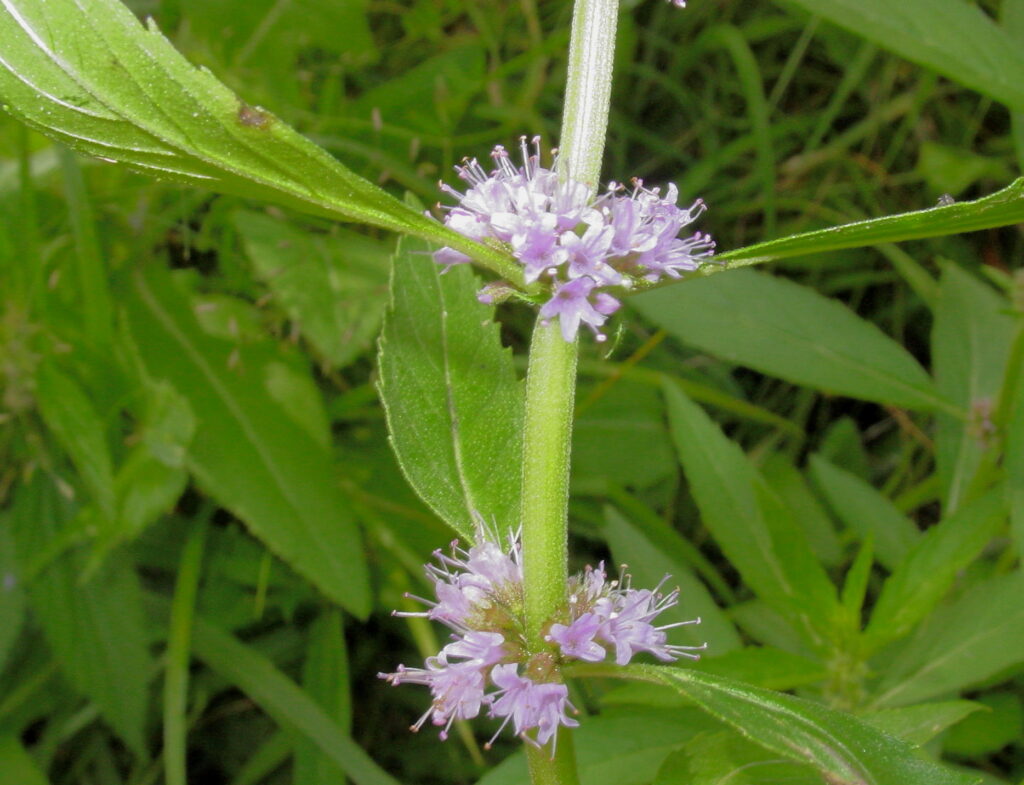
What it Looks Like
Look for bright, serrated leaves and tiny purple, pink or white flowers. Typically this plant grows 1-2 feet tall.
Where it Grows
Wild mint can be found in moist areas such as along shorelines of rivers or lakes. You will smell it before you see it!
When to Harvest
You can pick mint anytime during summer.
Uses
- Mint is an important medicine and food plant
- All parts of the plant (flowers, leaves, and stem) may be used, although usually the root is not used
- The plant is edible raw
- Make a simple beverage by pouring hot water over the plant
- Make an insect repellent by sprinkling powdered leaves on berries and drying meat
Medicine Plants
Many plants have medicinal properties. Some medicines are crushed up while others are boiled into a tea. Medicines may be harmful if not prepared properly. Information provided here is only intended to give an idea of the importance of these plants to Anishinaabeg. This is not a guide to plant use. Readers are cautioned to treat medicine plants with respect, and consult Elders and others knowledgeable about plants within Pimachiowin Aki to learn more before considering using any part of a plant for any reason.
The bush is our drugstore, and we are grateful for all the plants that give up their lives to keep us alive and help cure sickness. We need to honour those plants and to make sure they are looked after.
Elders Abel Bruce and Albert Bittern
8. Wiikenzh (Sweet flag)
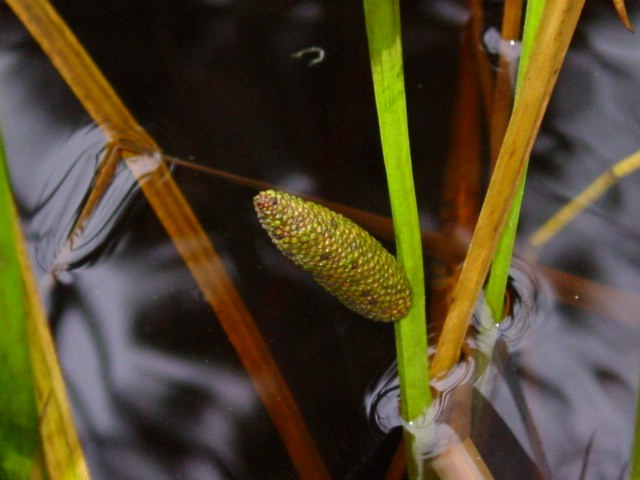
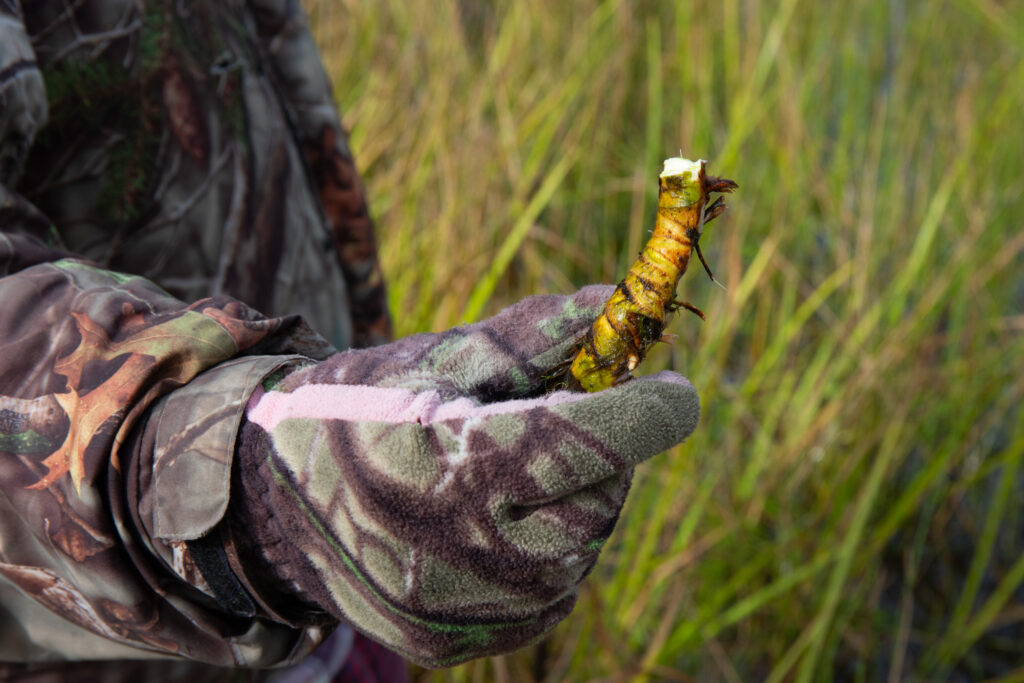
What it Looks Like
Sweet flag has thin, grass-like, greenish-yellow leaves that tend to grow in pairs. At first glance, a colony of sweet flag resembles bull-rushes but upon closer look, you’ll notice that the spike rising from the sweet flag leaves is covered in tiny yellow flowers (unlike the brown spike of a cattail).
Where it Grows
Sweet flag grows in wet, marshy areas.
When to Harvest
This plant is harvested in late summer or early fall.
Uses
- Sweet flag is very fragrant and when burned, the smoke is used in smudging to purify an area and remove negative energy or thoughts
- The dried root of sweet flag is used to treat high cholesterol and diabetes
My dad would harvest plants when we were on the trapline. There was a preparation process, and when somebody got sick, there would be medicine ready to use. He made an offering and placed the plant close to the fire and dried it.
Joe Owen, Pauingassi First Nation
9. Aamoo-waabigwan (Fireweed)
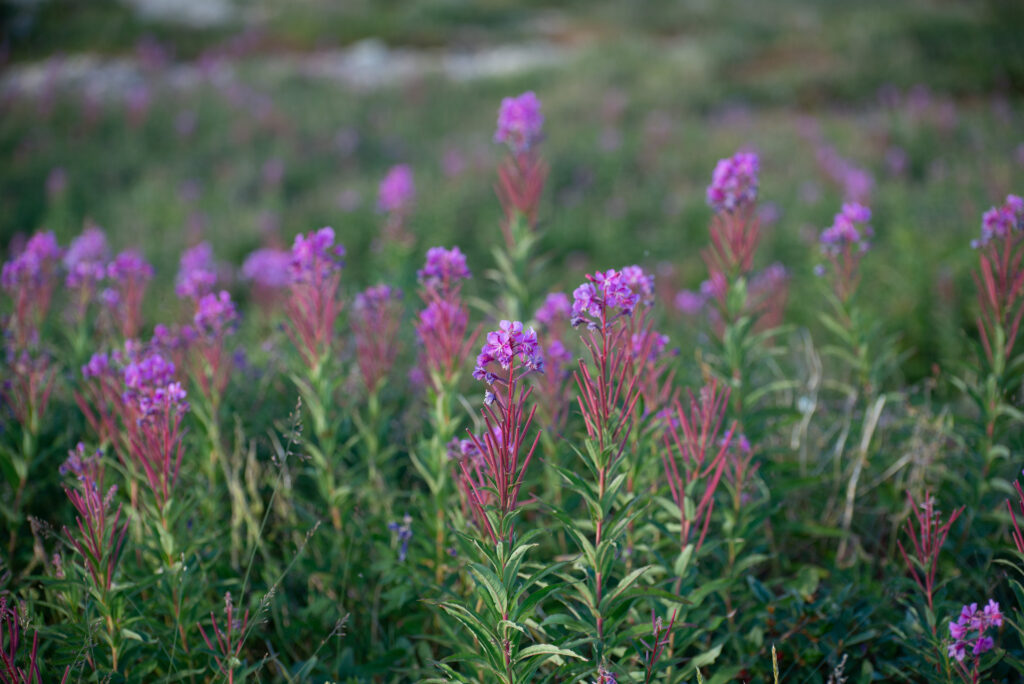
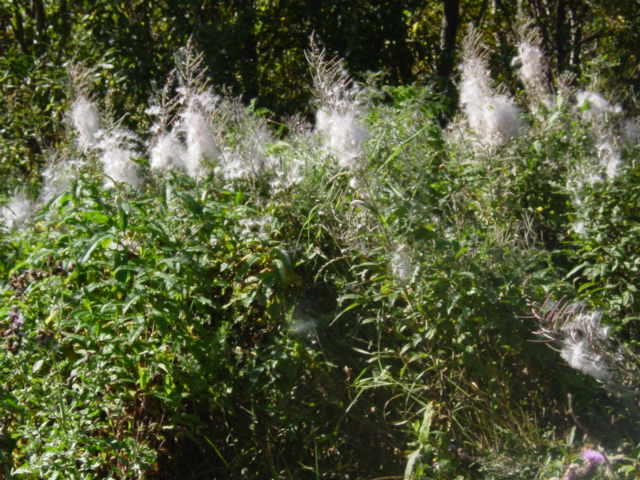
What it Looks Like
Fireweed is easily identified by its bright pink or purple flowers throughout summer. The plant grows in a spike shape with clumps of four-petalled flowers at the tips of the stems. Fireweed fluff appears in fall when the plant releases hundreds of cottony seeds. The seeds have tufts of silky hairs, so they are easily spread by wind.
Where it Grows
Fireweed is a medicine plant that grows in abundance following a forest fire. It grows where soil is relatively dry.
When to Harvest
Fireweed roots can be harvested year-round while its leaves are typically picked in summer.
Uses
- Fireweed has anti-inflammatory properties that help to reduce redness associated with skin irritations
- The leaves are used to make a tea
- The seeds are used as a fire-starter
- Years ago, fireweed was used as a tobacco substitute and also cooked and eaten like a vegetable
The pure medicine on the land is similar to medicine in the pharmacy. I learned that from my grandparents.
Melba Green, Bloodvein River First Nation
Important Plant for the Ecosystem
10. Meskwaanagak (Joe Pye Weed)
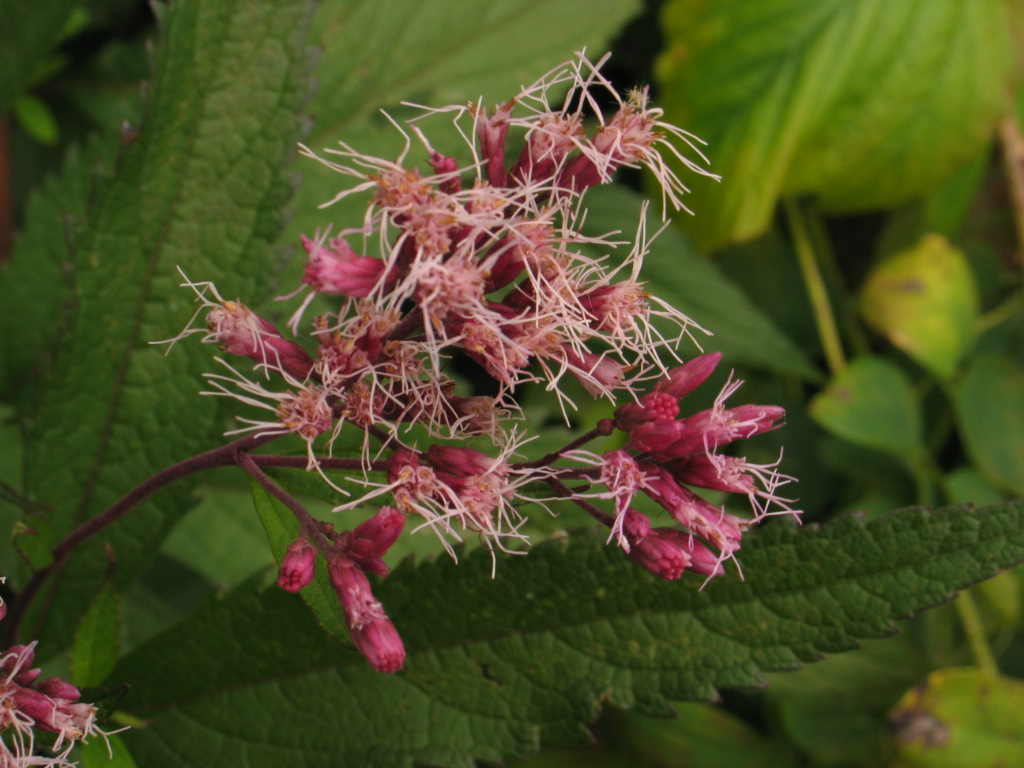
What it Looks Like
Joe pye weed is a late-blooming plant that can grow up to seven feet tall. In midsummer you will recognize it by its tiny mauve flowers, which bloom in large clusters atop the stems.
Where it Grows
Joe pye weed grows naturally at the edges of woodlands and wet meadows.
Blooming Season
Look for flowers in August.
Uses
- These flowers have a sweet vanilla scent that attracts butterflies and other pollinators
- Hummingbirds and other birds are also attracted to this plant
- Due to its height, joe pye weed provides shelter and protection for songbirds
Watch Five Gifts from the Creator to learn more about plants and their uses in Pimachiowin Aki.
Photos: Hidehiro Otake, Jane Driedger, wild raspberry photo was was originally posted to Flickr by mwri at https://www.flickr.com/photos/75897997@N00/194675157
